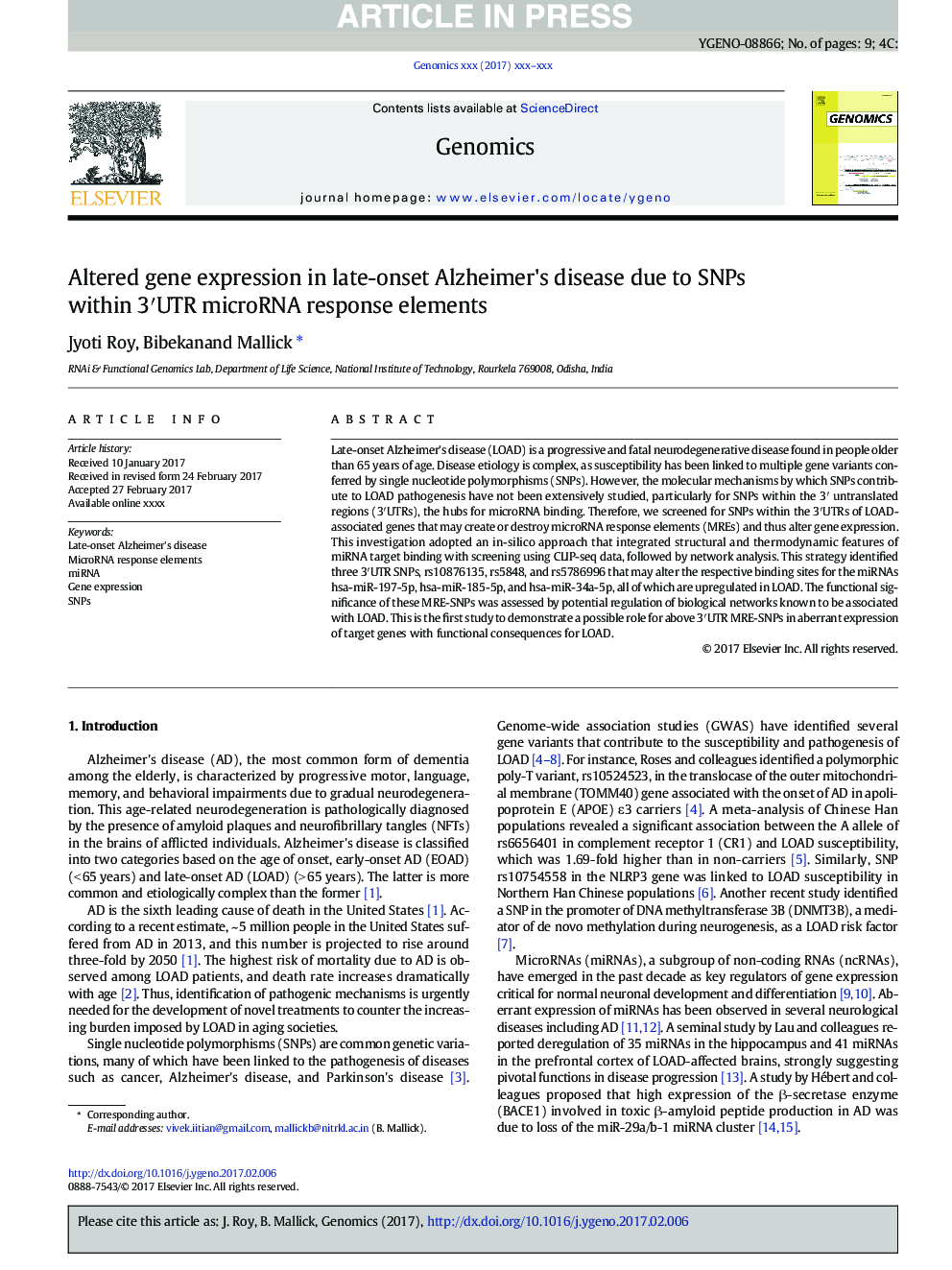| Article ID | Journal | Published Year | Pages | File Type |
|---|---|---|---|---|
| 5590068 | Genomics | 2017 | 9 Pages |
Abstract
Late-onset Alzheimer's disease (LOAD) is a progressive and fatal neurodegenerative disease found in people older than 65Â years of age. Disease etiology is complex, as susceptibility has been linked to multiple gene variants conferred by single nucleotide polymorphisms (SNPs). However, the molecular mechanisms by which SNPs contribute to LOAD pathogenesis have not been extensively studied, particularly for SNPs within the 3â² untranslated regions (3â²UTRs), the hubs for microRNA binding. Therefore, we screened for SNPs within the 3â²UTRs of LOAD-associated genes that may create or destroy microRNA response elements (MREs) and thus alter gene expression. This investigation adopted an in-silico approach that integrated structural and thermodynamic features of miRNA target binding with screening using CLIP-seq data, followed by network analysis. This strategy identified three 3â²UTR SNPs, rs10876135, rs5848, and rs5786996 that may alter the respective binding sites for the miRNAs hsa-miR-197-5p, hsa-miR-185-5p, and hsa-miR-34a-5p, all of which are upregulated in LOAD. The functional significance of these MRE-SNPs was assessed by potential regulation of biological networks known to be associated with LOAD. This is the first study to demonstrate a possible role for above 3â²UTR MRE-SNPs in aberrant expression of target genes with functional consequences for LOAD.
Related Topics
Life Sciences
Biochemistry, Genetics and Molecular Biology
Genetics
Authors
Jyoti Roy, Bibekanand Mallick,
